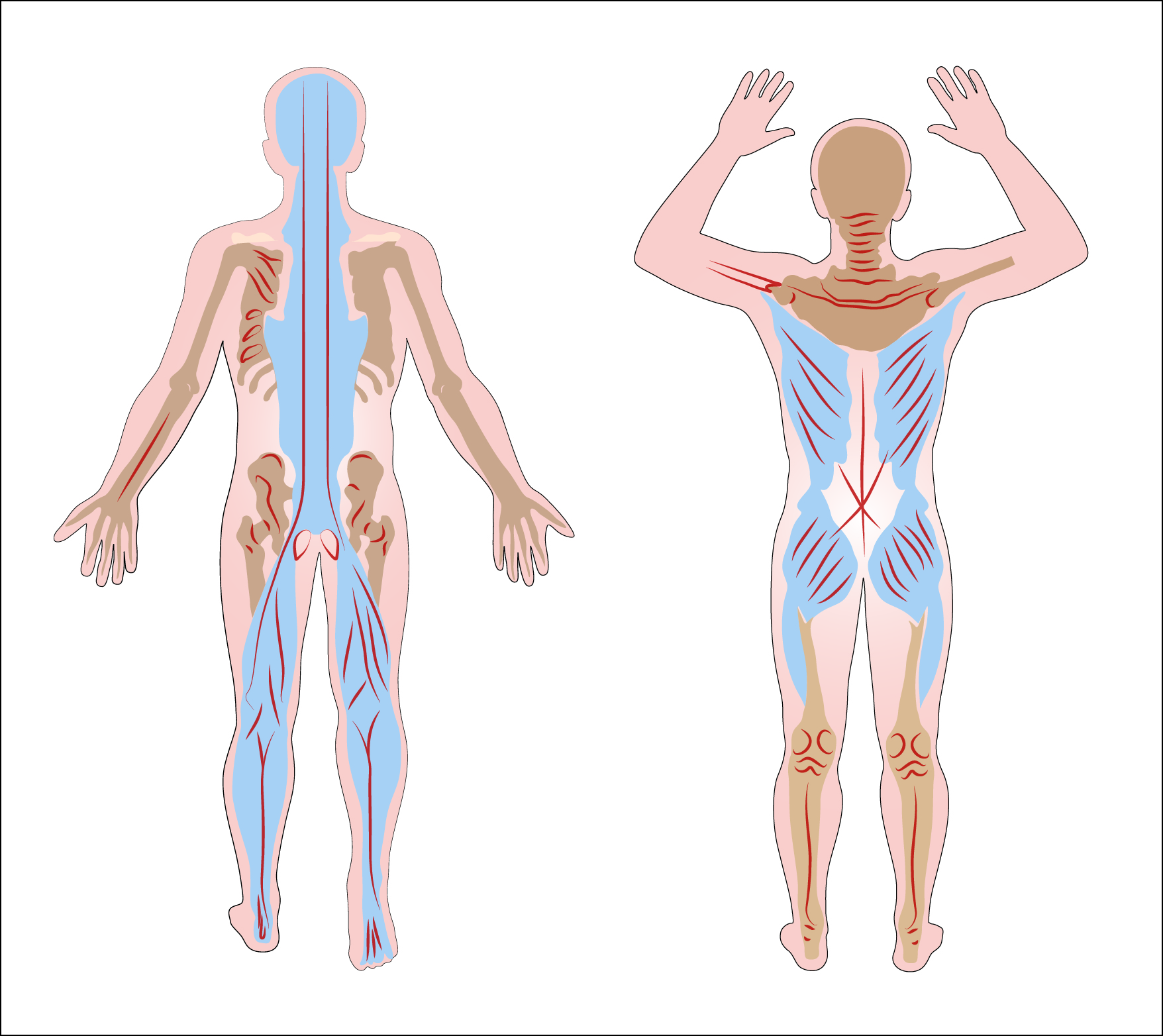The Posterior Chain

Here we’re taking a little more of a global look at our bodies through the Posterior chain. If you have ever heard phrases like anatomy trains, myofascial lines, or lower cross syndrome and wondered what the heck people were talking about this blog is for you! Now there are dozens of movement chains in the body, today I am choosing to focus on the posterior chain because I believe this is an area that is affecting the majority of us out there today as a major culprit of chronic low back pain as well as hip and core instability.
So let’s start with what is a posterior chain? The simple answer is that it is a set of muscles that work together to perform a basic body movement, and in this chain it is made up of our occipitofrontalis, erector spinae and thoracolumbar fascia, gluteal muscles, hamstrings, calves and plantar fascia. Want to know where all of these are? Here’s a great picture showing the superficial (or topmost layer) as well as our deeper layers of muscles.

Now what are all these muscle supposed to be doing? As you can probably imagine at the most basic level they are important for things like walking and bending. In this chain of command the gluteal muscles are designed to be our primary hip stabilizers and provide the support for our legs and torso to move from. I don’t know if you knew but we are currently in an epidemic! A sitting epidemic, “hello my name is Lisa and I’m a sitoholic.” The phrase sitting is the new smoking is no joke people. Now most of us know that sitting all day isn’t good for us, but I’m not sure everyone knows exactly why… Research is showing us that after 20 mins of stagnant sitting our glut muscles turn off, i.e. stop engaging and turn into a cushion between our sit bones and the chair. I know what you’re saying 20 minutes? That’s nothing, that’s not even my morning commute! I know, so imagine 10 hours a day sitting our poor glutes don’t stand a chance. After this becomes a chronic state our body decides it must adapt and so the glutes stay turned off and our quads take over the job. We now have a quad dominant posture, to further adapt to this new state our low back erectors and hamstrings tighten up to meet the resistance of our anterior quad muscles and keep us from falling forward. The tightening of these posterior muscles in turn causes our pelvis to tilt anteriorly increasing the lordotic curve of the lumbar spine.

I’ve added a picture here to show those lumbar vertebrae being pulled forward by these unbalanced muscles, and do you see the abdominal muscles now? They are no longer aligned and functioning properly and so they now in turn become weak.
Lower cross syndrome looks like: tight muscles groups in the hip flexors (quads) and low back muscles, with weak and ‘turned off’ muscle groups in the glutes and abdominals. Now when we’re doing things like walking and bending we’re doing it all with a faulty system. As you can imagine this does not help us to feel our best and can be a root cause of that chronic pain you’re having. How can we fix this you may ask? Well the solutions are not hard, but that doesn’t mean they’re easy. It’s about becoming and staying more attentive to your posture and habits, moving in correct motion patterns, and most importantly stretching and strengthening where it’s specifically needed. Feel free to contact me today about what your body needs to address these issues, and as always keep moving.
This blog was inspired by By Perry Nickelston, DC, FMS, SFMA article in Dynamic Chiropractic volume 34.


